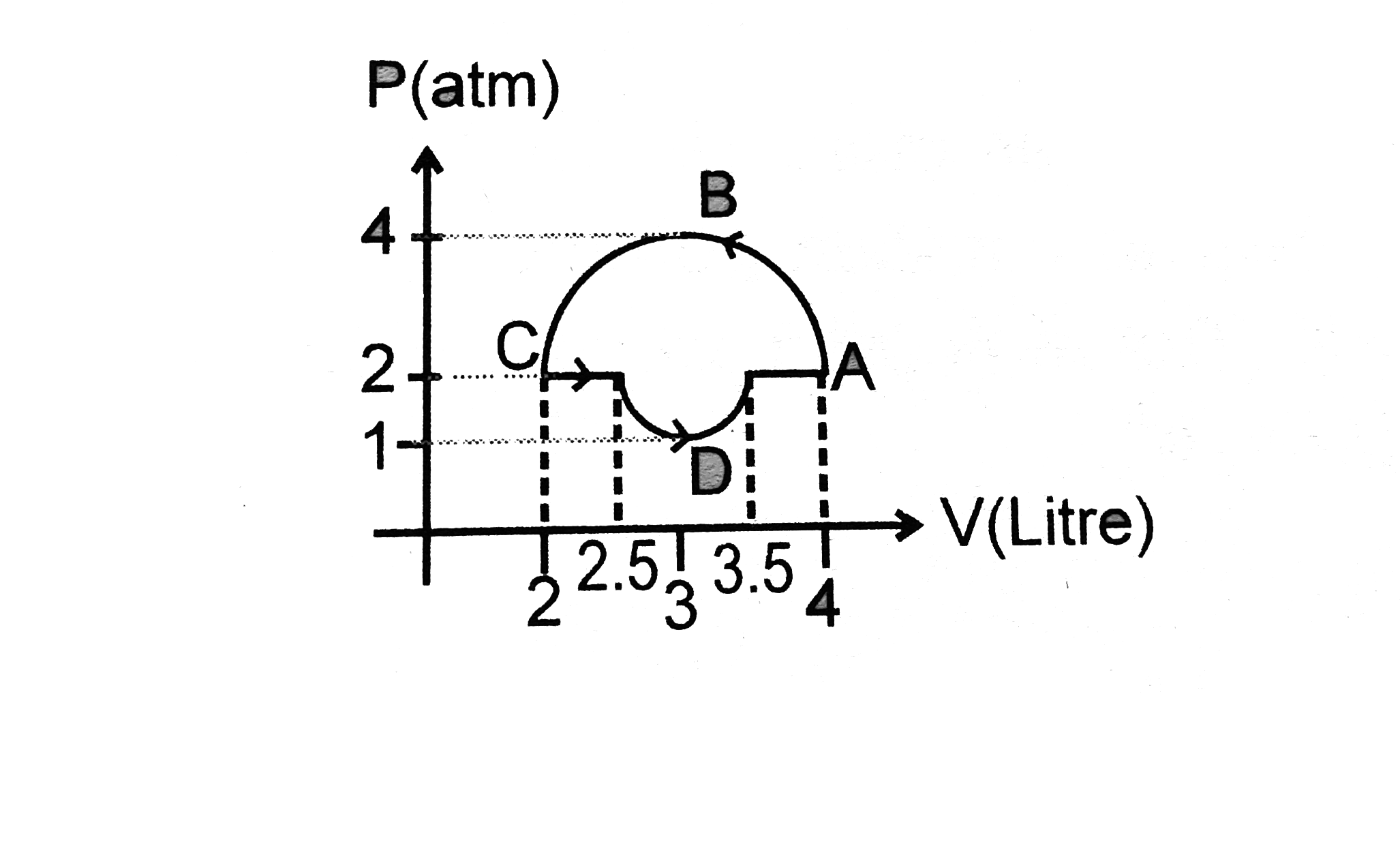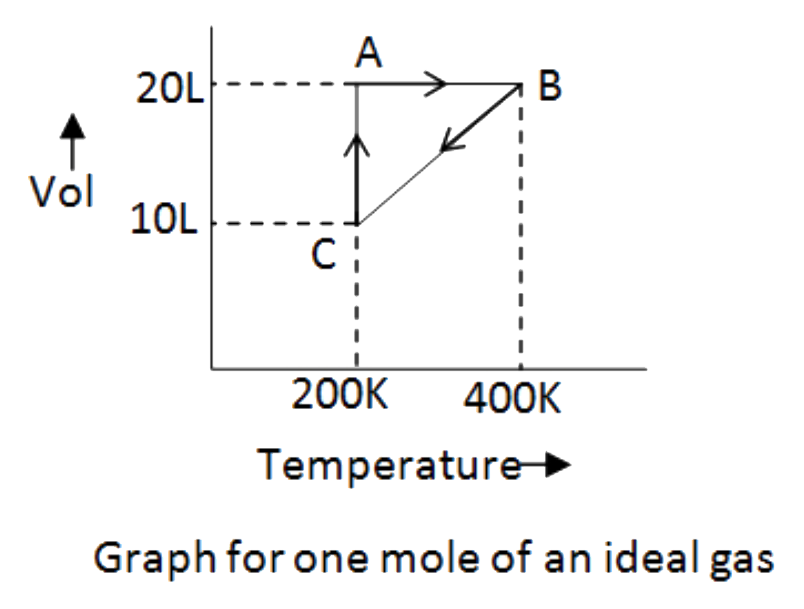For work done to be reversible, the process should be
cyclic
isobaric
isochoric
adiabatic
The correct Answer is:D
To determine the conditions under which work done is reversible, we need to analyze the nature of different thermodynamic processes. Here’s a step-by-step solution:
Step 1: Understand the Concept of Reversibility
Reversible processes are idealized processes that can be reversed without leaving any change in the system or surroundings. For work done to be reversible, the system must return to its original state without any net change.
Hint: Reversibility implies that both the system and surroundings can be restored to their initial states.
Step 2: Analyze the Work Done in Different Processes
The work done during a thermodynamic process can be expressed using the first law of thermodynamics:
Q=ΔU+W
where Q is the heat added to the system, ΔU is the change in internal energy, and W is the work done.
Hint: The first law of thermodynamics helps us understand how energy is conserved during a process.
Step 3: Consider Adiabatic Processes
In an adiabatic process, there is no heat exchange with the surroundings (Q=0). Therefore, the equation simplifies to:
0=ΔU+W
This implies:
W=−ΔU
In this case, all the work done on the system contributes to a change in internal energy, which can be fully recovered if the process is reversed.
Hint: An adiabatic process allows for the complete conversion of work into internal energy, making it reversible.
Step 4: Contrast with Isothermal Processes
In an isothermal process, the temperature remains constant, which means:
ΔU=0
Thus, the equation becomes:
Q=W
Here, heat is exchanged with the surroundings to maintain constant temperature. If the system loses heat, it cannot fully recover the work done because some energy has been dissipated.
Hint: In isothermal processes, heat exchange complicates the reversibility of work done.
Step 5: Conclusion
For work done to be reversible, the process should be adiabatic. In an adiabatic process, there is no heat exchange, and the work done can be fully converted to internal energy, allowing for complete reversibility.
Final Answer: The process should be adiabatic for work done to be reversible.
Reversible processes are idealized processes that can be reversed without leaving any change in the system or surroundings. For work done to be reversible, the system must return to its original state without any net change.
The work done during a thermodynamic process can be expressed using the first law of thermodynamics:
Q=ΔU+W
where Q is the heat added to the system, ΔU is the change in internal energy, and W is the work done.
In an adiabatic process, there is no heat exchange with the surroundings (Q=0). Therefore, the equation simplifies to:
0=ΔU+W
This implies:
W=−ΔU
In this case, all the work done on the system contributes to a change in internal energy, which can be fully recovered if the process is reversed.
In an isothermal process, the temperature remains constant, which means:
ΔU=0
Thus, the equation becomes:
Q=W
Here, heat is exchanged with the surroundings to maintain constant temperature. If the system loses heat, it cannot fully recover the work done because some energy has been dissipated.
For work done to be reversible, the process should be adiabatic. In an adiabatic process, there is no heat exchange, and the work done can be fully converted to internal energy, allowing for complete reversibility.
Topper's Solved these Questions
- QUESTION BANK 2021BOOK - NAVNEET PUBLICATION - MAHARASHTRA BOARDCHAPTER - QUESTION BANK 2021EXERCISE - Thermodynamics (Very Short Answer (VSA) ( 1 MARK Each ) )
12 Videos
- QUESTION BANK 2021BOOK - NAVNEET PUBLICATION - MAHARASHTRA BOARDCHAPTER - QUESTION BANK 2021EXERCISE - Thermodynamics (Short Answer I (SA1) ( 2 MARKS Each ) )
10 Videos
- QUESTION BANK 2021BOOK - NAVNEET PUBLICATION - MAHARASHTRA BOARDCHAPTER - QUESTION BANK 2021EXERCISE - Kinetic Theory of gases and Radiation (Long Answer ( LA) ( 4 marks Each) )
3 Videos
- MULTIPLE CHOICE QUESTIONSBOOK - NAVNEET PUBLICATION - MAHARASHTRA BOARDCHAPTER - MULTIPLE CHOICE QUESTIONSEXERCISE - Communication Systems
6 Videos
- SHORT ANSWER QUESTIONSBOOK - NAVNEET PUBLICATION - MAHARASHTRA BOARDCHAPTER - SHORT ANSWER QUESTIONSEXERCISE - Assignments
3 Videos
Similar Questions
Knowledge Check
Work done in reversible isothermal process is given by
A−2.303 nRT log V2V1BnRy−1(T2−T1)C−2.303 nRt log V2V1D+2.303 nRt log V2V1Assertion: In a thermodynamic process, initial volume of gas is equal to final volume of gas. Work done by gas in this process should be zero
Reason: Work done by gas in isochoric process is zero.A(a) If both Assertion and Reason are true and the Reason is correct explanation of the Assertion.B(b) If both Assertion and Reason are true but Reason is not the correct explanation of Assertion.C(c) If Assertion is true, but the Reason is false.D(d) If Assertion is false but the Reason is true.Work done in a reversible expansion is
AΔP⋅ΔVBP⋅ΔVCq−ΔVDV1∫V2
Work Done In Isothermal Reversible Process
View SolutionStatement-1 : Work done in isothermal reversible process is more than irreversible process.
And
Statement-2 : Irreversible process is an infinitesimally slow process.
View SolutionThe maximum work obtainable from a reversible process is given as
View SolutionCalculate work done during isothermal reversible process when 5mol ideal gas is expanded so that its volume is doubled at 400K.
View SolutionFind work done by the gas in the process shown in figure.

View Solution

